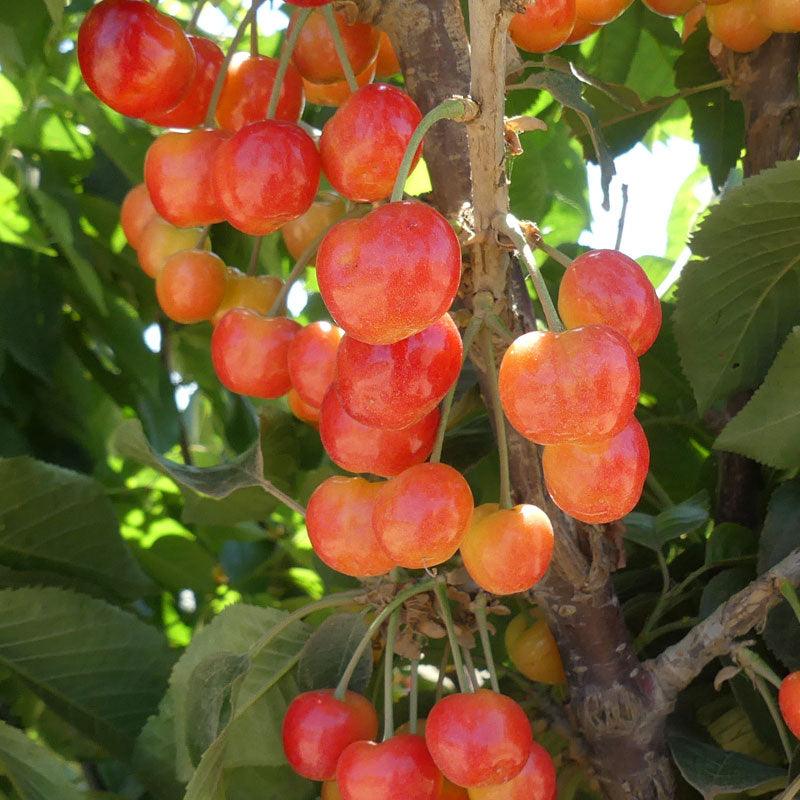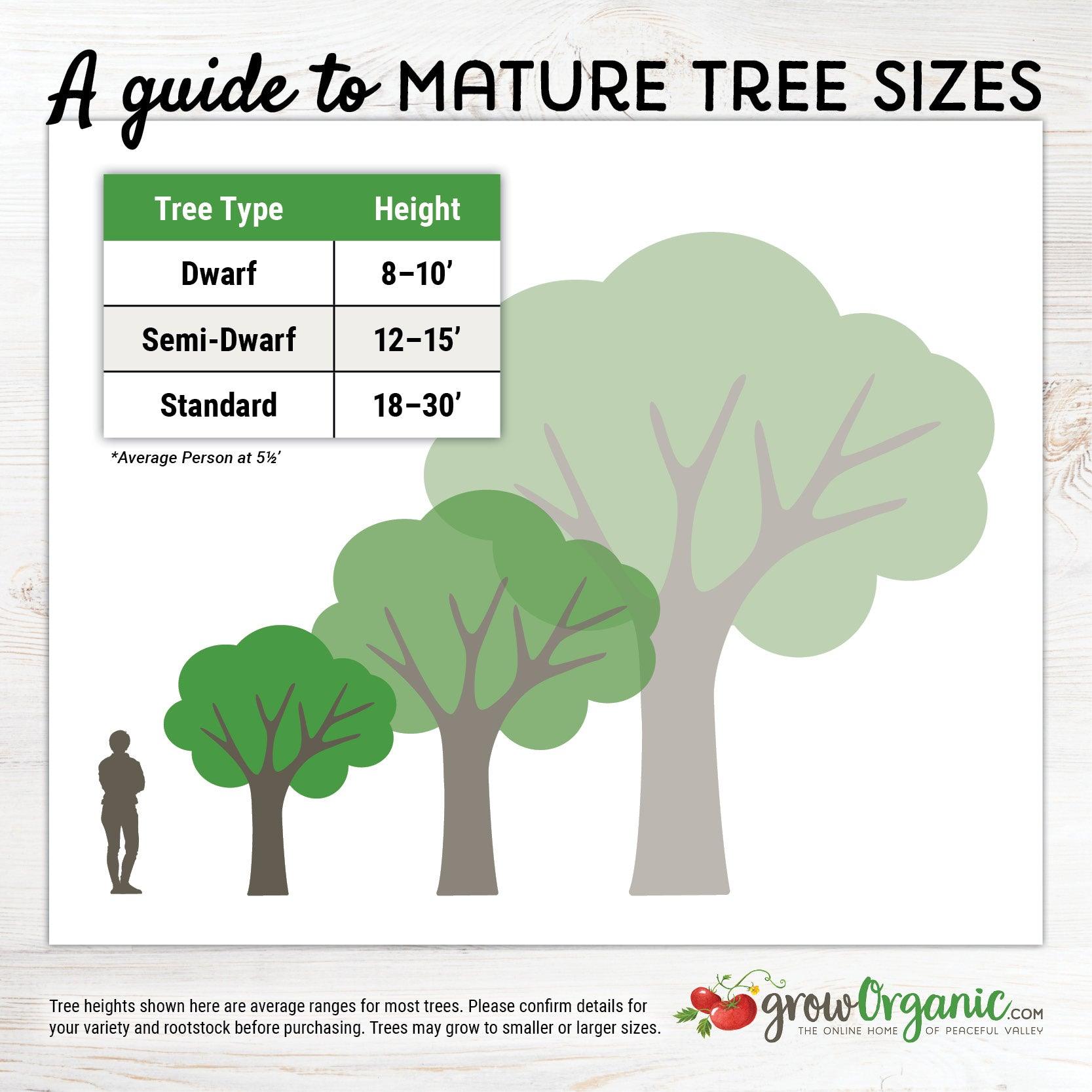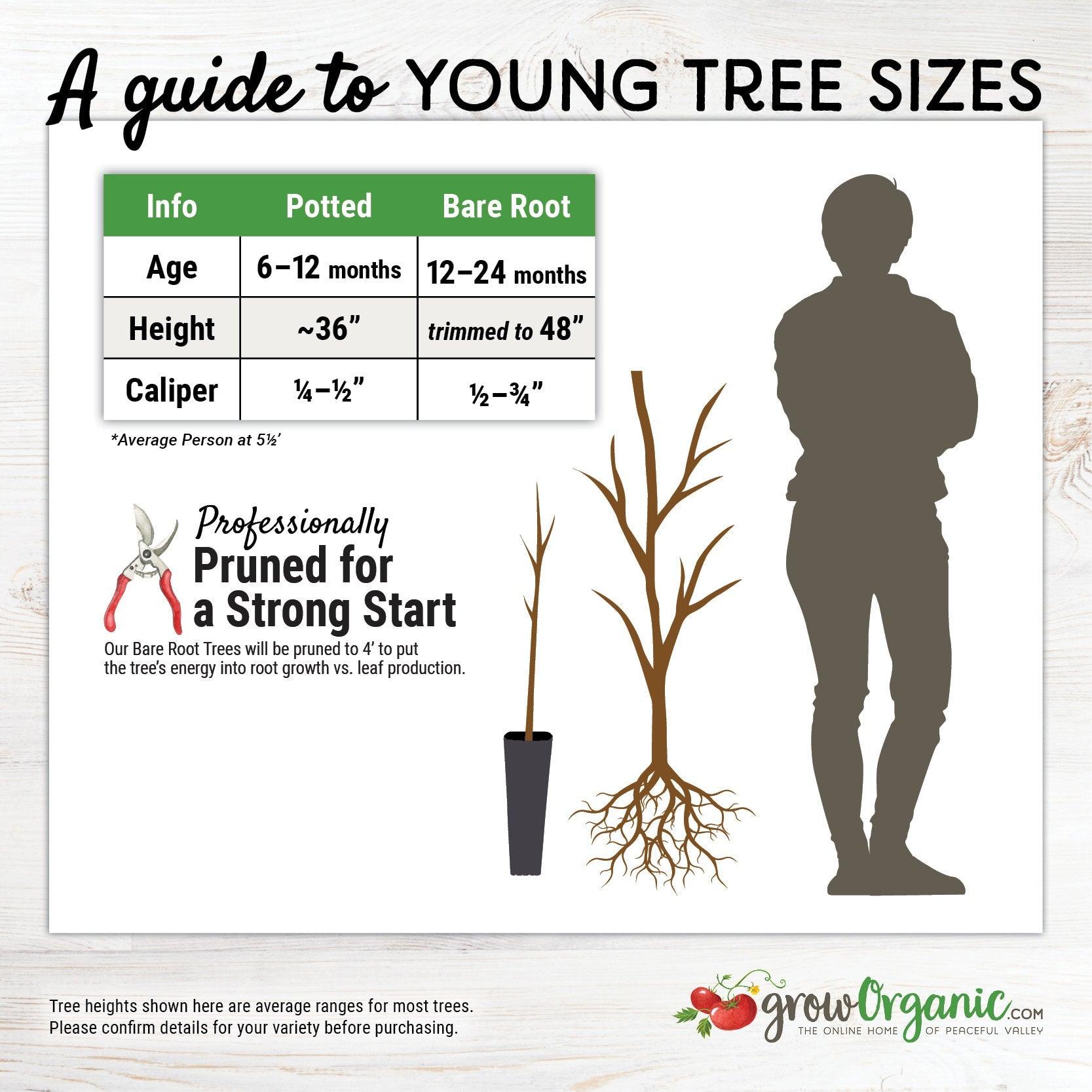Item Number: FT092
Rainier Cherry Tree
Golden cherries, exquisite sweetness
Rainier Cherry Tree is a beloved sweet cherry variety celebrated for its exceptional flavor, striking color, and reliable productivity. The Rainier Cherry (Prunus avium ‘Rainier’) produces large, golden-yellow fruit blushed with rose-red, offering a uniquely sweet, low-acid taste that stands apart from darker varieties. Its firm, juicy flesh and delicate aroma make it a favorite for fresh eating, baking, and preserving, with a flavor profile often considered among the finest of all cherries.
This vigorous, productive cherry tree thrives in full sun and well-drained soil, performing best in regions with moderate to high chill hours. Rainier is not self-fruitful and requires a compatible pollinator—such as Bing, Black Tartarian, or Lapins—to produce heavy crops. Once established, it offers abundant harvests of premium-quality cherries that ripen in early to mid-summer, making it one of the season’s most anticipated fruits.
Ornamental as well as productive, the Rainier Cherry Tree bursts into bloom each spring with clusters of soft white blossoms, adding beauty and pollinator interest to home orchards and edible landscapes. Its strong growth habit and reliable performance make it a top choice for gardeners seeking a high-quality sweet cherry that delivers both exceptional flavor and visual appeal.
For anyone looking to grow a premium sweet cherry tree with standout flavor and striking fruit, Rainier Cherry remains a classic choice—loved by home gardeners, orchardists, and fruit enthusiasts alike.
Semi-Dwarf on Maxma 14 'R' brokforest cv rootstock.
- Zones: 5-9
- Chill hours: 700
- Bloom Time: Mid-season (Based on typical Central Valley California weather)
- Harvest: May 20 - June 10
- Looks: Large, yellow with a red blush. Distinctive yellow flesh.
- Personality: Considered the sweetest of all cherries.
- Facts of note: A more recent introduction, the Rainier is a cross between the popular Bing cherry and the late-season, intense-flavored Van cherry. Introduced in 1952 by Washington State University, it quickly became one of the most popular backyard varieties, especially in the Pacific Northwest where it originated. Bright yellow, with pink and red blush covering the white-yellow flesh and one of the highest sugar levels of all premium sweet cherries. Thin-skinned, with rich sweetness and firm flesh, Rainier has become one of the most popular sweet cherries. Harvests mid-June to early July—great to pair with Bing cherry.
- Pollination: Pollinated by Van, Black Tartarian, Bing, or Lapins
The Rainier cherry tree, a stunning and sweet variety, graces gardens with its vibrant fruits. Developed in 1952 at Washington State University, it's a semi-dwarf tree, ideal for Zones 5-9. Let's explore the nuances of cultivating this delectable cherry tree.
Growing Zones and Chill Hours
- Suited for Zones 5-9, requiring 700-800 chill hours.
- Ideal for mid-season bloom (typical Central Valley California weather).
Planting Cherry Trees
These sweet and flavorful cherries, known for their distinct yellow hue, require careful consideration during the planting process. In early spring, select a sunny location with well-draining soil, ensuring the Rainier cherry trees receive ample sunlight for optimal fruit production. Plant young trees in a hole at the same depth as their nursery container, and provide proper spacing to accommodate their growth.
Harvest and Appearance
- Harvest spans from May 20 to June 10.
- The Rainier cherry features large, yellow fruit with a striking red blush and yellow flesh.
Personality and Facts
- Known for its unparalleled sweetness among cherries.
- A cross between the Bing and Van cherries, it boasts one of the highest sugar content levels.
- Developed in 1952, it swiftly gained popularity due to its rich sweetness and firm flesh.
- The thin skin encapsulates the cherry's unique flavor profile, making it a sought-after choice.
- An ideal mid-season variety to complement the Bing Cherry during harvesting in mid-June to early July.
Pollination and Partners
- Pollinated by Van, Black Tartarian, Bing, or Lapins, fostering its fruitfulness.
The Rainier cherry tree, with its delightful sweetness and distinctive appearance, stands out as a favored choice among cherry enthusiasts. Its vibrant hues and rich flavor make it a prized addition to orchards and gardens, ensuring a bountiful harvest of delectable fruits.
Why Rainier Cherries Are a Must-Have
Rainier cherry trees are a must-have for any garden or landscape, offering not only stunning golden cherries with a distinctive red blush but also an unmatched sweetness that makes them a prized sweet cherry variety. This cherry tree thrives in USDA Zones 5-9, requiring specific chill hours and well-draining soil to produce fruit that delights the taste buds in early summer. For those looking to grow a tree that reaches new heights in flavor and beauty, the Rainier cherry tree for sale is the ideal choice.
Look and Taste of the Fruit
Grown across the United States, the Rainier cherry tree produces stunning golden-yellow cherries with a red blush—celebrated for their striking appearance and unmatched sweetness. With sugar levels reaching up to 20 Brix, the fruit delivers juicy, tender flesh and subtle hints of honey, vanilla, and almond. The semi-dwarf Rainier cherry tree is ideal for home orchards, offering compact growth without compromising on fruit quality.
Special Growing Conditions
Growing cherry trees has never been easier. You can grow cherries masterfully with our guidance. Cultivating Rainier cherry trees requires specific care and attention to ensure a bountiful harvest of these precious fruits. Key considerations include:
- Climate: Rainier cherry trees thrive in regions with a Mediterranean climate, characterized by mild, wet winters and warm, dry summers. They require 700-800 chill hours during winter to break dormancy and set fruit.
- Soil: Well-draining, loamy soils with a slightly acidic to neutral pH (6.0 to 7.0) are ideal. Proper preparation ensures good root development and nutrient uptake.
- Sunlight: Full sun exposure for 6 to 8 hours a day is essential for healthy growth and high-quality fruit.
- Pruning and Training: Pruning maintains structure, airflow, and fruiting. Train Rainier cherry trees to an open-center or modified central leader system.
- Irrigation: Consistent, deep watering—especially during the growing season—is vital. Well-drained soil helps prevent root rot.
- Pest and Disease Management: Monitor for pests like aphids and cherry fruit fly, and diseases such as brown rot.
The Rainier cherry tree is a marvel of fruit cultivation, offering a visual feast with its golden-yellow cherries and a taste sensation with its exceptional sweetness and nuanced flavor.
Summary
Our Rainier cherry tree for sale offers gardeners the opportunity to grow one of the sweetest and most visually striking cherries available. This tree thrives in USDA Zones 5-9, requiring well-drained soil and careful pruning to develop strong fruiting wood and healthy roots. With the right cross-pollination and climate, these trees produce golden-yellow cherries with a red blush that ripen to perfection—making them a stunning and fruitful addition to any garden or orchard.
Why Buy Rainier Cherry Tree From Us
At our store, you’ll find premium Rainier cherry trees for sale, ready to elevate your garden with their exquisite golden cherries and exceptional sweetness. Our trees are cultivated to thrive in USDA Zones 5-9, requiring proper chill hours and well-draining soil. Choose us for your fruit trees and enjoy high-quality stock, knowledgeable support, and prompt shipping. Transform your garden into a paradise of fruit and blooms—shop now and bring home your Rainier cherry tree today!
Visit our Fruit Tree Central for a listing of all our fruit tree videos and articles.
Visit Tree Characteristics for a listing of all our fruit & nut tree growing characteristics.
For more information about different types of rootstocks and how they influence tree size and growth, see our Tree Rootstock Characteristics Chart.


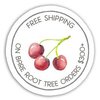
Check Your Zone Compatibility:
Compatible with your zone.
Growing Zone for

Our Guarantee To You
Since 1976, we've served our customers at every stage of growing. Please contact us at any time. We are happy to support and assist you.
Shipping Information
Shipping Information
Cannot ship to the following states: HI, AK, PR, GU, VI
Shipping Weight: 5.0 lb
Dimensions: 47.5"L x 7.3"W x 2.75"H
Features
Features
Characteristics
Characteristics
Planting & Care
Planting & Care
Useful Information
Useful Information
Guarantee
Guarantee
Limited Dormant Tree & Plant Guarantee
* Claim deadline is June 15th
We guarantee that your dormant tree or plant will arrive in good, viable condition. If your tree arrives in substandard condition, notify us within 3 days of delivery. Please email pictures of the box, inside packaging, the tree and its roots to helpdesk@groworganic.com. We will investigate your claim and process a request to exchange or refund the damaged product.
If your dormant tree or plant has not grown new leaves by June 15th, you may be eligible for our Limited Dormant Tree & Plant Guarantee. This guarantee provides for a store credit for the purchase price of the tree, excluding shipping. Please see the Instructions below.
Important Dates:
- April 1st Dormant trees/plants must be planted in the ground
- May 15th Perform scratch test, if no new leaves have grown
- June 15th Deadline to apply for a dormant tree/plant credit
All required documentation must be received by June 15th for your claim to be considered. Claims or documentation received after June 15th will be denied, without exception. Instructions listed below
Terms and Conditions
We cannot guarantee that your tree or plant will remain alive and healthy after it is received, or bear fruit as there are too many variables in your environment that are beyond our control (i.e. soil preparation, weed and pest control, proper irrigation, chill hours, compatible hardiness for your growing zone, proper choice of pollinator, extreme weather, rodent damage, disease, etc.).
We cannot guarantee that we will be able to provide a replacement tree/plant of the same species either that same growing season or in future years. Customers are responsible for all shipping fees associated with replacement trees and plants.
If we determine that the tree you purchased directly from us is not viable, we will issue you a store credit (not a refund) for the purchase price of the affected dormant tree or plant. Shipping is not included in the dormant tree/plant guarantee. Store credits can be used to purchase any product we sell and are valid for use only until July 1st of the following year.
Historically, 98% of our dormant trees and plants grow and thrive when they have been cared for and planted using our growing guides. Dormant trees and plants must be planted in the ground by April 1st in order to be eligible for credit. If the ground in your area is still frozen solid, you may temporarily plant your tree or plant in a pot.
Potted, non-dormant trees or plants are excluded from this guarantee as they are not dormant at the time of shipment. Evergreen trees such as citrus, avocado and olive trees are not available for credit under the Dormant Tree and Plant Guarantee.
Instructions
We guarantee that your dormant fruit tree or plant will leaf out, if you care for it according to our growing guides. In the unlikely event that your dormant tree or plant does not have leaves by May 15th, follow these simple steps to apply for a store credit:
Before you call or email, please perform a “scratch test” to determine if the tree or plant is still alive. This video shows how to check for live tissue under the bark. Scratch tests need to be done a few inches above and below the graft.
Green Cambium Layer / Living Trees
If the cambium layer under the bark is green, give your tree a little more time. It is still alive, but hasn’t come out of dormancy yet. Check to make sure that it is getting the right amount of deep root water, enough sunlight and that the weather is warm enough for that type of tree/plant to come out of dormancy. Every tree has its own personality and will come out of dormancy at different times. Be sure to submit the required documentation listed below by June 15th, if it doesn’t grow leaves.
Brown Cambium Layer / Dead Trees
If the scratch test shows a brown cambium layer or if your dormant tree/plant doesn’t have leaves by June 1st, please email us at helpdesk@groworganic.com. All required documentation listed below must be received by June 15th for your claim to be considered. To be considered for the guarantee claim, all required documentation must be received by June 15th. Incomplete submissions will be denied.
Required Documentation
- Order number
- Name of dormant tree/plant and the quantity affected
- Photos of each tree or plant showing:
- The roots (tree or plant must be pulled out of the ground)
- The scratch test areas
- The entire tree/plant
We reserve the right to not issue credit for items that have already been replaced. We also reserve the right to require photographic evidence that the tree/plant was not killed by root rot, rodent or mechanical damage.
Share
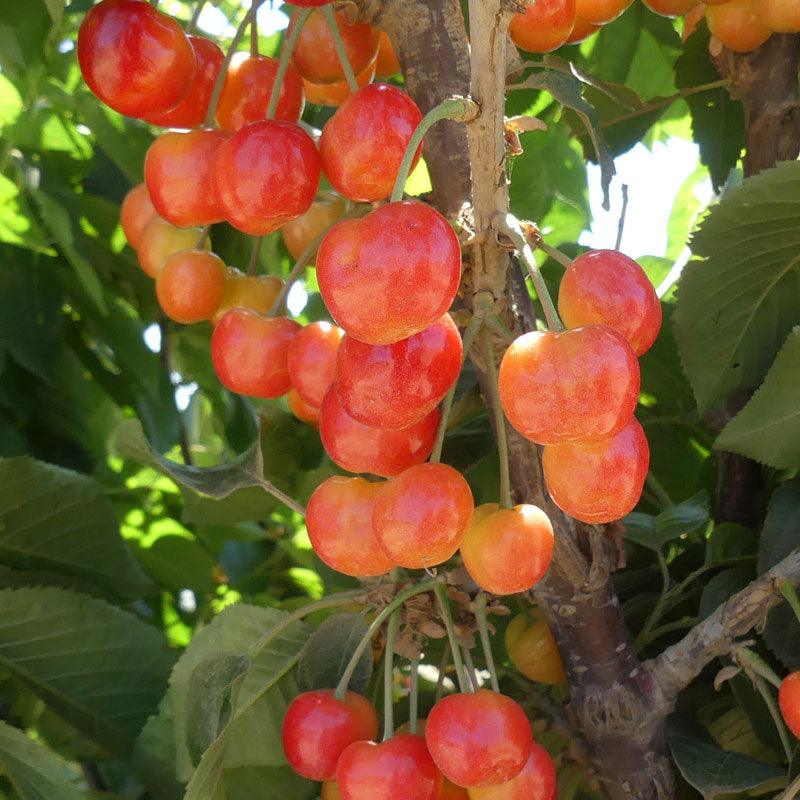
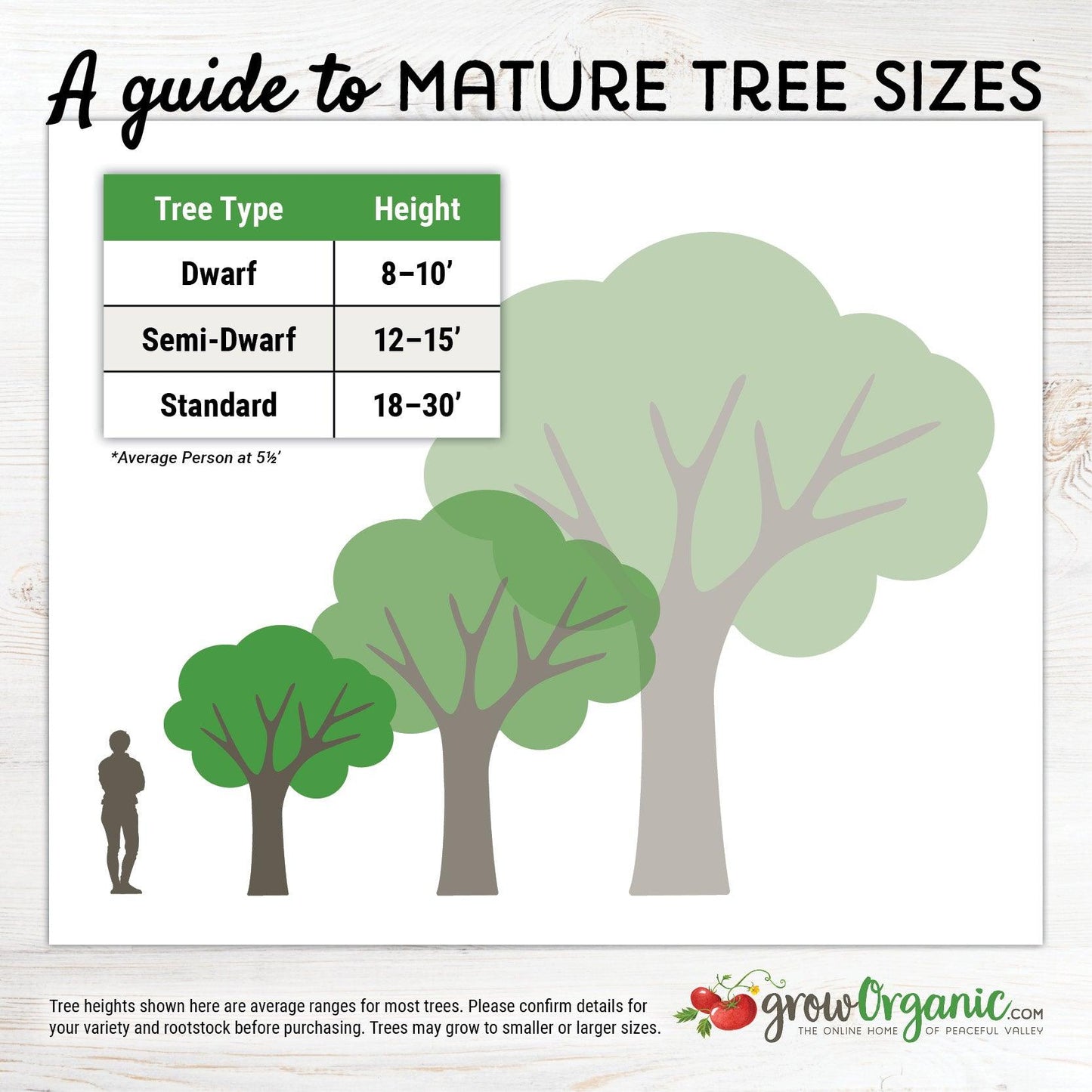
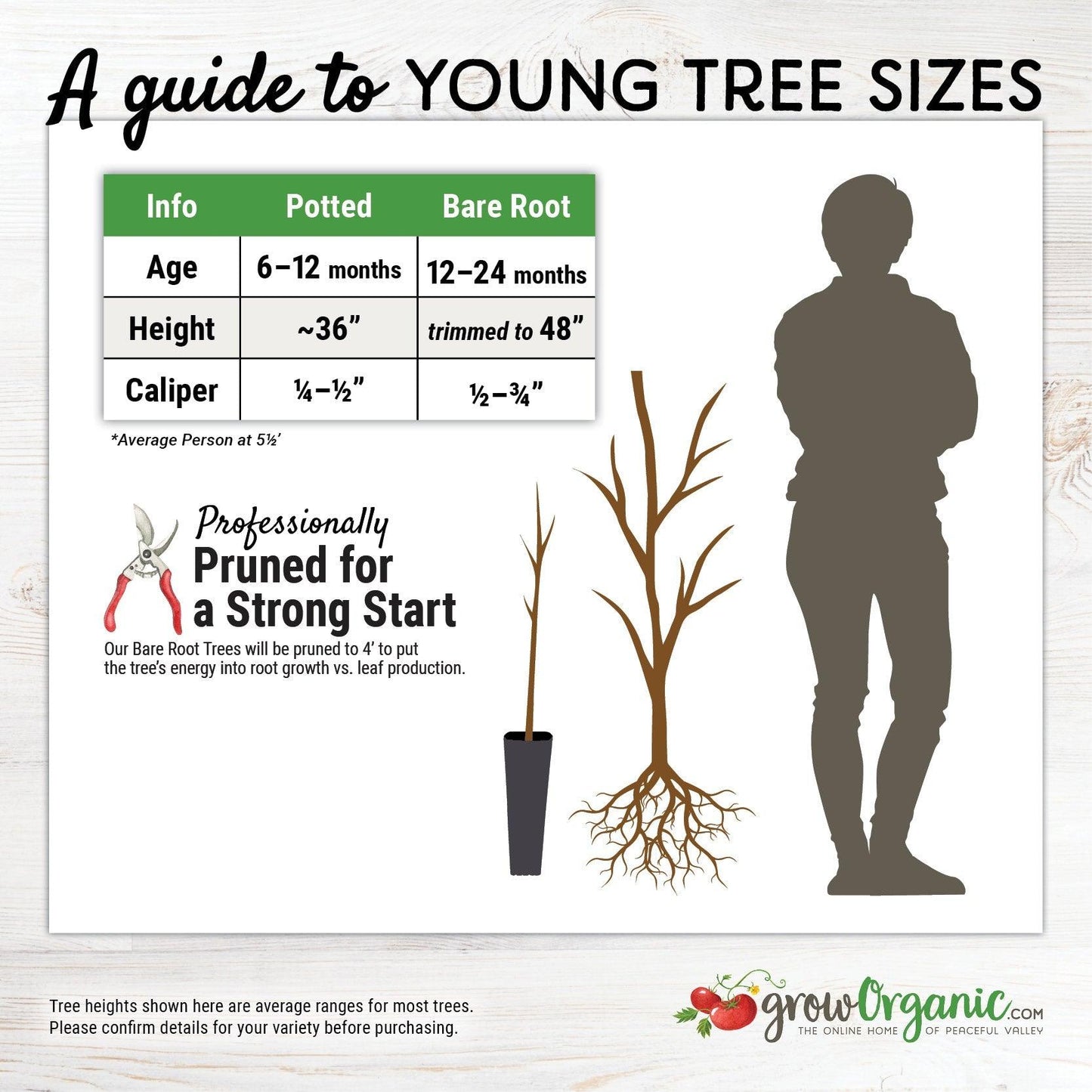
I preordered this in late November. It arrived in mid February cuz my area is ready for planting that early. This is one of those "don't judge a book by its cover" cases. Sure, it was short, less than 4 feet above the ground. And it wasn't too thick. But since then after I planted it into the ground, it's now grown a bunch of new branches and leaves. It's added about 20 inches to its height so far. By August, I'm expecting it to be a full yard taller, or even more.
Among the other cherry trees that I bought this year, this by far is the best one so far in terms of growth rate and health.
Trees seems to be healthy but we're packed aggressively facing two different directions, the result of which is all 3 trees arrived with 12-14 inches of new growth snapped off the top. Not sure I'd do this again.
Loved the size of the tree was still sleeping. and now the leaves are waking up it is flowering. I would buy here again.
Tree arrived in good time. It was well packed. It was trimmed and appears to be a good specimen .
I was looking for specific dwarf cherry trees and Grow Organic was the only site that carried both varieties that I was searching for. I had never ordered from them before so I was unsure what I would get. I was very surprised and happy with the trees. Both were at least an inch in diameter and had a great great root system. I would have had to pay a premium price at another popular site for trees of this caliber. Planted next day after arrival and now a couple of weeks later can see the trees beginning to bud. I look forward to see how they grow.

